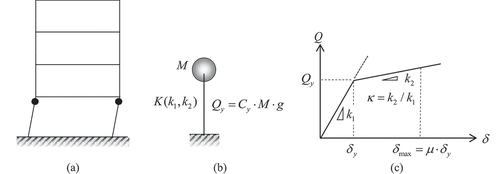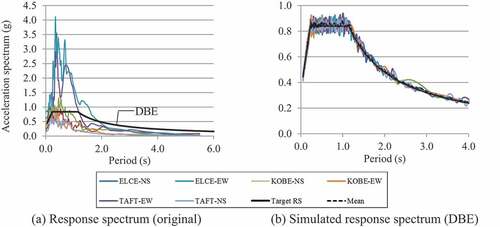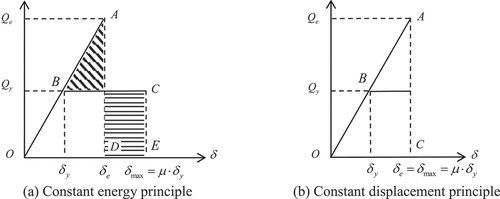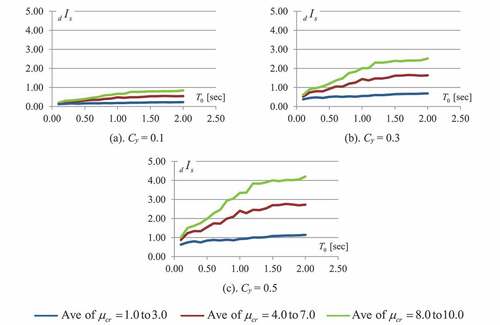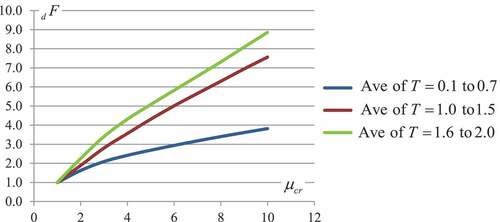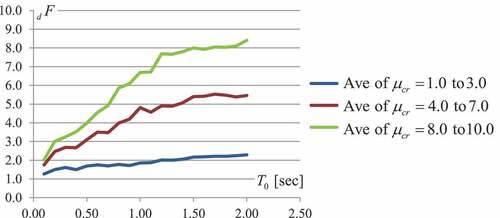Figures & data
Table 1. Selected ductility factor when varying T0 and Cy.
Table 2. Simulated earthquake ground motions.
Table 3. The shear coefficient of C0.
Figure 9. The reliability of the ductility index estimation method with increasing the critical ductility factor.
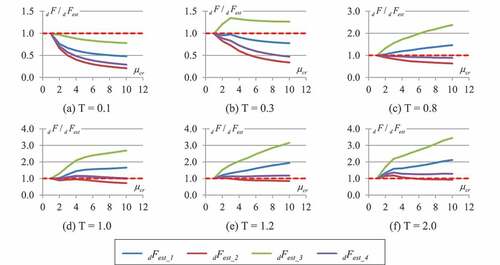
Table 4. The percentage of error estimation for each dF estimation.
Figure 10. Relationship critical ductility factor and dynamic ductility index on several estimation methods.

Table 5. The percentage of error comparison for both estimation method.

